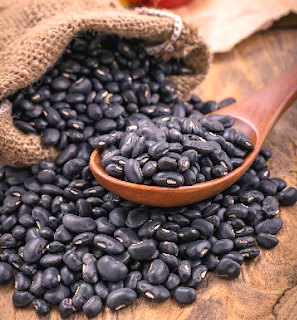Cultivation of Black Gram
Botanical Name of Black Gram is Vigna mungo
Common Name of Black Gram is Urad Dal
Black Gram is a major contributor to the pulse crops of Kharif. It is a crop grown in almost all the states of the country. The amount of protein is found to be very high in it. Apart from lentils, it is also used in making other dishes. Black Gram crops also help in preventing soil erosion. It also proved beneficial in increasing the fertility of the land.
 |
| Black Gram |
Climate
Dry climate is required for the cultivation of Black Gram. That is why it is sown in Kharif. The climate of this time is favorable for its production.
Land
For the cultivation of Black Gram, sandy loam to loamy land in which there is abundance of organic matter has been found to be best. Saline and alkaline lands are not suitable for Black Gram cultivation. Also, there should be adequate drainage facilities on the land.
Preparation of Land
For the cultivation of Black Gram, first plowing should be done with soil turning plow. After this, two plowing are done by cultivator or country plow. Before plowing the field, weeds and residues of previous crops should be removed from the field. After each plowing, it is necessary to apply a pad. Due to this the field becomes flat and the soil becomes brown.
Also Read : Garlic Cultivation
Advanced Strains of Black Gram
There are many strains of Black Gram, from which disease resistant varieties should be selected or on the advice of local scientists, as per your requirement, you can choose any of the following strains.
T-9
These are disease resistant varieties. It has been found suitable for mixed farming and Zaid crops. Its maturity period is 90-95 days (about 3 months), and the production is found to be around 10-12 quintals per hectare.
Navin
It is also a disease resistant variety. It is suitable for mixed farming. Also, it is a particularly good variety for fodder. Its pods ripen together. Due to which the field becomes empty all the time. The crop matures in about 85-95 days (about 3 months) and yields 10-12 quintals. Apart from this, Pant Black Gram 30, Pant Black Gram 31, Pant Black Gram 35, Shekhar, Basant Bahar are the main ones.
Seed Rate of Black Gram
12-15 kg seed is required in Kharif. The quantity of seeds in Zaid seems to be slightly higher. For this, advice can be taken from local scientists.
Seed Treatment
Do seed treatment at the rate of 2.5 gm Carbendazim fungicide per kg seed about 24 hours before sowing. After this, Rhizobium culture and PSB. should be treated with This controls the disease and improves production.
Seeds Sowing
Sowing of Black Gram should be done in row, for this in Kharif crop, row to row should be 30 cm. and plant to plant 5 cm. Keep a distance of 25 cm and row to row for Zaid crop. And the distance from plant to plant is 5 cm.
Nutrient Management
There is very little need for chemical fertilizers in Black Gram cultivation. Still, 15 kg of Nitrogen and 40 kg of Phosphorus are required for good production. Before sowing the full amount of fertilizers should be spread normally in the field and mixed in the soil.
Irrigation Management
There is no need for irrigation in Kharif crop. However, if there is a lack of moisture, then light irrigation should be given. Irrigate Zaid crop as per requirement.
Weed Management
It is very important to keep the field free from weeds. Because weeds increase their competition and weeds absorb nutrients quickly. Which has a direct impact on production. For this, it is best that after 20-25 days of sowing, weeding should be removed from the field or Basalin should be mixed with 2 liters of water in 800-1000 water and sprayed in the field before sowing the seeds.
Harvesting
Black Gram beans ripen almost simultaneously. At the ripening stage, the pods turn black in color and the plants turn yellow. In this condition, the entire crop should be harvested at once.
Yield
About 10-12 quintals per hectare of production is obtained on scientific cultivation.
Income-expenditure details per hectare from Black Gram cultivation
Field preparation, seed, and sowing expenses - Rs 5860
Fertilizer, Weed Control - Rs 4500
plant protection - Rs 1000
Harvesting - Rs 5500
Total expenditure – Rs 16860
Yield - 9 quintal rate 3400/quintal = 30,600.00
Income 30600 – 16860 = Rs 13740